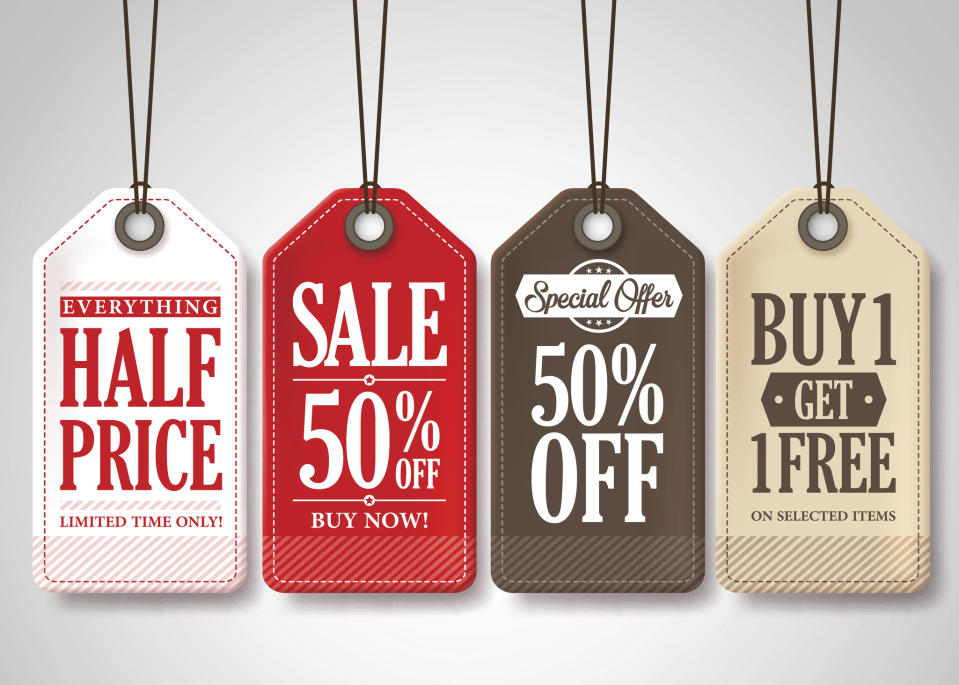Down 20%, Is Ollie's Bargain Outlet Still a Buy?
When Ollie's Bargain Outlet Holdings Inc (NASDAQ: OLLI) released its 2018 third-quarter financial report, shares dropped as the results left investors less than enthused. And, while the stock price has begun a modest recovery, shares still sit 20% below 52-week highs. On the surface, the results didn't seem disappointing. Total sales grew to $283.6 million, a 19.1% increase year over year, and adjusted earnings per share (EPS) rose to $0.32, a 45% increase. On top of the solid top- and bottom-line growth, Ollie's raised its 2018 full-year guidance. Ollie's fiscal year ends Feb. 2.
If the quarterly results were so good, why did shares fall? First, it's important to note that all major indices fell in 2018's last quarter, and Ollie's was hardly alone in selling off. Ollie's stock price has also increased about 42% in the past year, even after the decline. In fact, once we take a closer look at Ollie's business model, I think you'll agree that this sell-off did little more than provide long-term shareholders with a more attractive entry point.

Ollie's attracts customers by providing a treasure-hunting atmosphere, where customers can find name brands on sale. Image source: Getty Images.
What Ollie's does
The way CEO Mark Butler sees it, the discount retail chain operates a fairly easy-to-understand business model. "Ours is a simple business. We buy cheap, and we sell cheap," he said in the company's third-quarter conference call. "This is just what we do." And no one does "cheap" better than Ollie's. When Butler took the reins of Ollie's in 2003, the company was a modest regional chain with 28 locations that has since exploded into more than 300 stores with a presence in 23 states. The company's explosive growth comes on the back of Ollie's finding name brands at super-cheap prices and then selling them for a modest profit to customers eager to find deals.
How Ollie's creates value for shareholders
There are two major parts to the bullish thesis for Ollie's: the company's growing Ollie's Army, its affectionately nicknamed loyalty program, and the steadily increasing store count. Both should provide tailwinds to the company's results for years to come.
Ollie's Army now counts 8.8 million members in its ranks, an approximate 9% increase over 2017's third-quarter total, and its members now account for about 70% of the company's sales. The company is actively exploring new ways to increase membership engagement and, to this end, it rolled out a mobile app and introduced ranks into the Army. Since both initiatives are still in the early stages, the company says not enough data has been collected to indicate how successful either has been, though it did say 115,000 members had now downloaded the app. The ranks are designed to incentivize customers to spend more. The more the customer spends, the higher the rank they obtain, and the higher the rank they achieve, the more deals they unlock.
At the end of the company's third quarter, the company was operating 297 stores in 23 states and had opened 32 stores in the trailing 12 months, including its first store in Texas. How big can Ollie's grow? Butler maintains that the company can comfortably expand to 950 locations nationwide, reiterating that goal as recently as the 2018 third-quarter conference call. This gives investors a long runway of growth yet, with Ollie's at less than one-third of its stated goal for retail locations!

Ollie's management team believes the retail chain can eventually grow to 950 locations, meaning its store count is still just one-third of the company's target. Image source: Ollie's Bargain Outlet Holdings Inc.
Two risks that bear watching
There are risks to Ollie's that bear watching by investors. First, can Ollie's pipeline of closeout deals continue to supply the growing number of Ollie's locations across the country? Ollie's management team insists that its access to better deals and brands will only increase as it grows, but if Ollie's ever backs off its long-stated goal of 950 locations or significantly slows down its expansion rate, it would be a considerable red flag to that investment thesis.
Second, it would be a major concern if the growth of Ollie's Army stalls. With 70% of sales coming from these members, Ollie's cannot afford to stop growing its loyalty program. Investors need to see if Ollie's efforts to increase engagement are successful, giving secondary metrics, such as the number of app downloads, increased importance.
One important overarching metric shareholders can use to indirectly measure both concerns is comparable-store sales. Comparable-store sales compare a store's performance in the current reporting period to the store's performance in the previous year's corresponding period, beginning in the 16th month after it opens. From 2013 to 2017, comparable-store sales grew at an average rate of 3.7%.The company originally guided for 1% to 2% of comparable-store sales growth in 2018, but has since raised it to 3% to 3.5% with only one quarter left to report. Given that, if comparable-store sales fall under 2% for a sustained period of time, it could be cause for concern and further investigation.
Why I'm optimistic about Ollie's
In a digital age, it might seem counterintuitive to invest in a brick-and-mortar retailer that doesn't make a dollar from online sales. Ollie's, though, is a discount retailer with a proven leader at the helm and an established track record of sustainable, steady growth. Customers will make the trek to the stores because they actually enjoy the treasure-hunting atmosphere and the spectacular deals they find. With a market cap of just under $3.5 billion and a store count that's less than one-third of its ultimate goal, Ollie's, I believe, has years of market-beating returns in its future.
More From The Motley Fool
Matthew Cochrane has no position in any of the stocks mentioned. The Motley Fool owns shares of Ollie's Bargain Outlet Holdings. The Motley Fool has a disclosure policy.

 Yahoo Finance
Yahoo Finance 